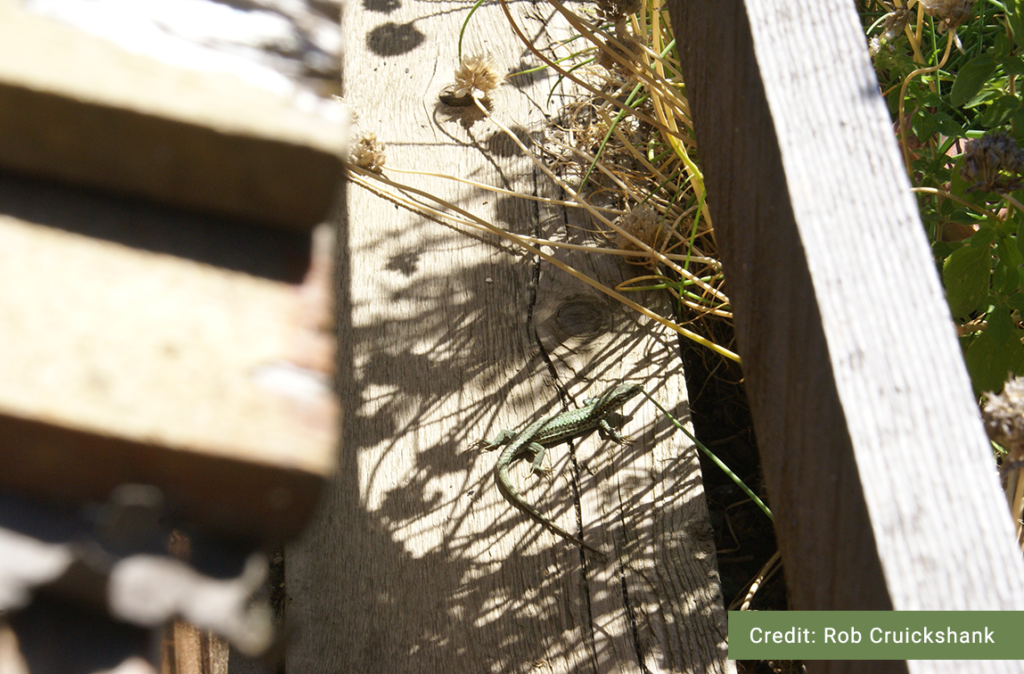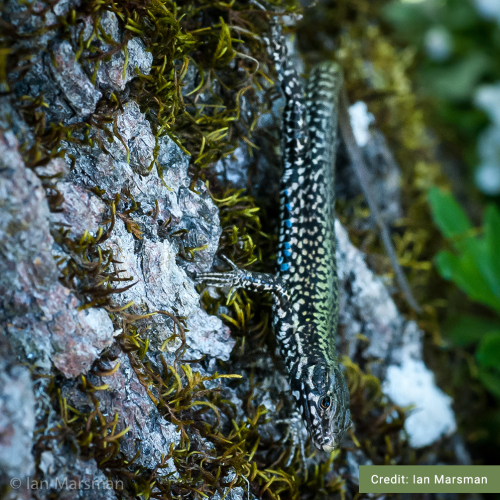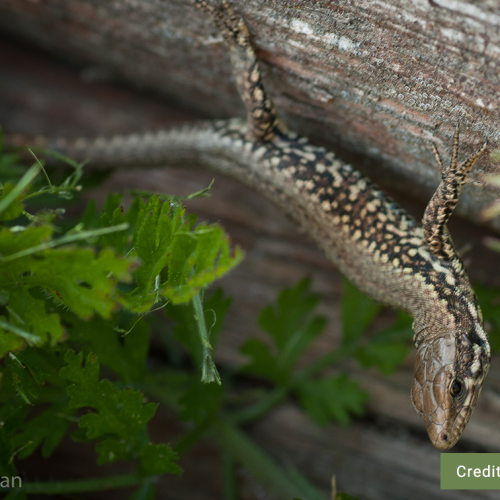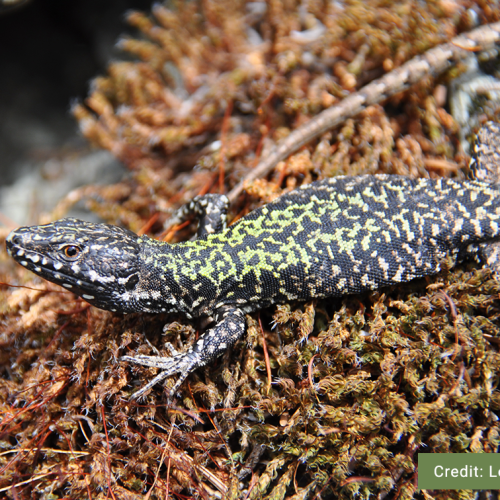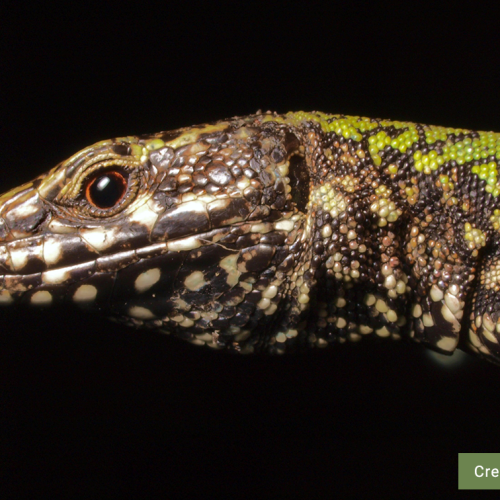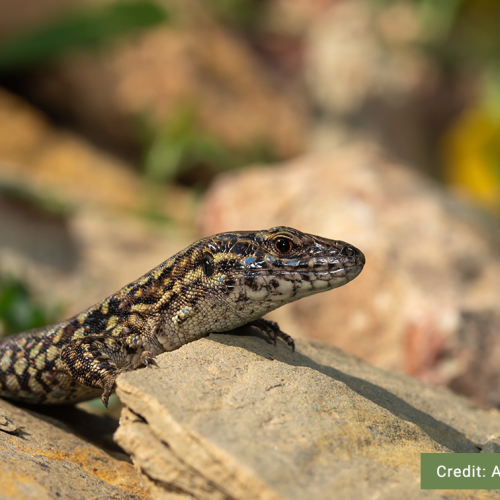Credit: Antje Schultner
Common Wall Lizard
Podarcis muralis
Description
Other names: European Wall Lizard
The Common Wall Lizard (also referred to as the European Wall Lizard) is the only known introduced reptile species to have established breeding populations in British Columbia. The introduction has been traced back to a few lizards released in Saanich in 1967, and about a dozen animals from a small private zoo that were released in West Saanich in 1970. They now range as far north as Campbell River and south to Metchosin on Vancouver Island, and have appeared on a few other islands. As of 2021, they have established themselves in three areas on the lower mainland. Common Wall Lizards have an angular head and prominent jaw with a flattened body and long limbs and toes. They typically reach 16-23 cm in total length, with females tending to be shorter and lighter than males. Most of the length of the Wall lizard is in the tail, which is about twice as long as the body. They are green or brown with dark blotches on the back and have a light cream-coloured belly with black blotches. Males have bright blue spots along the sides that may look like a thick continuous line. This may also be observed in females, but the spots are typically much smaller and lighter. When captured by a predator, the Common Wall Lizard may autotomizeDefinition:The ability to shed part or all of the tail as a defensive mechanism. Nervous impulses in the tail cause it to twitch for some time, distracting potential predators long enough to allow the animal to escape. their tails, which will twitch and wiggle for several minutes distracting the predator and allowing the lizard to escape. The tail begins to heal immediately and will grow back, typically in a different colour or pattern than the original.
Listen to the Indigenous words for “lizard” here!
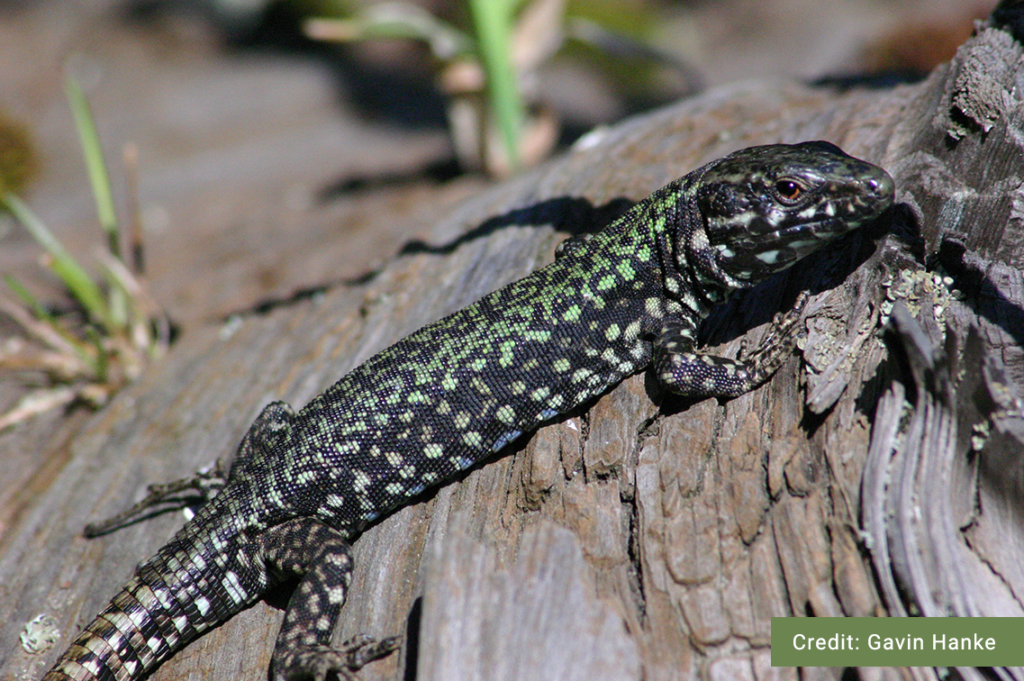
Similar Species
The Common Wall Lizard loosely resembles the Northern Alligator Lizard, although the two are easily distinguished by body shape and colour. The Northern Alligator Lizard has less noticeable patterning, is stouter and shorter, and is far more widespread in British Columbia.
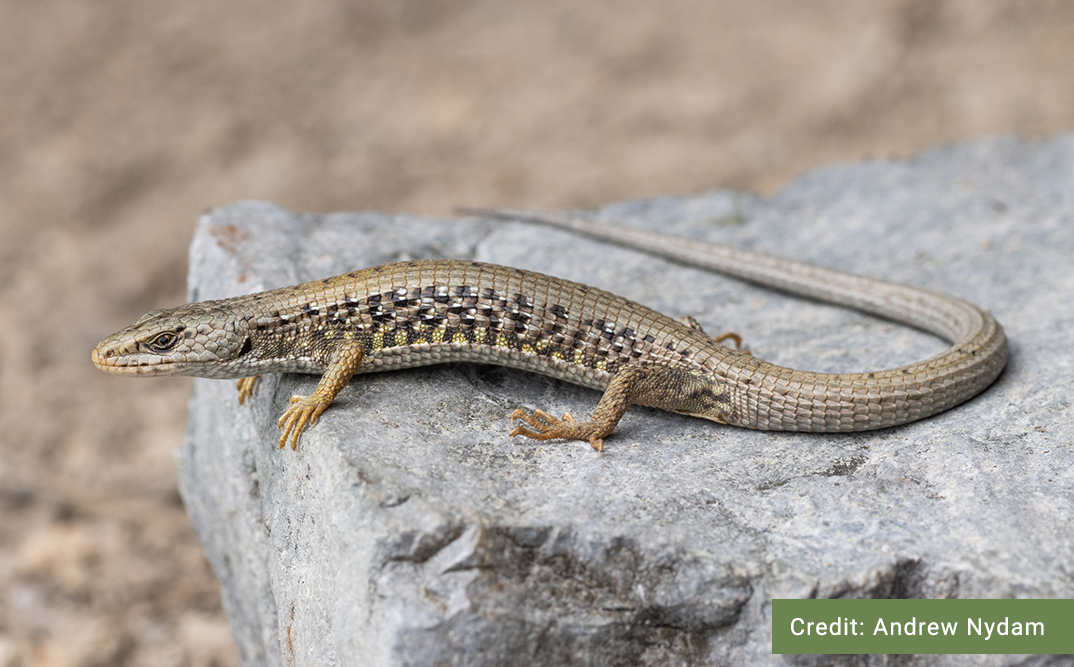
Northern Alligator Lizard
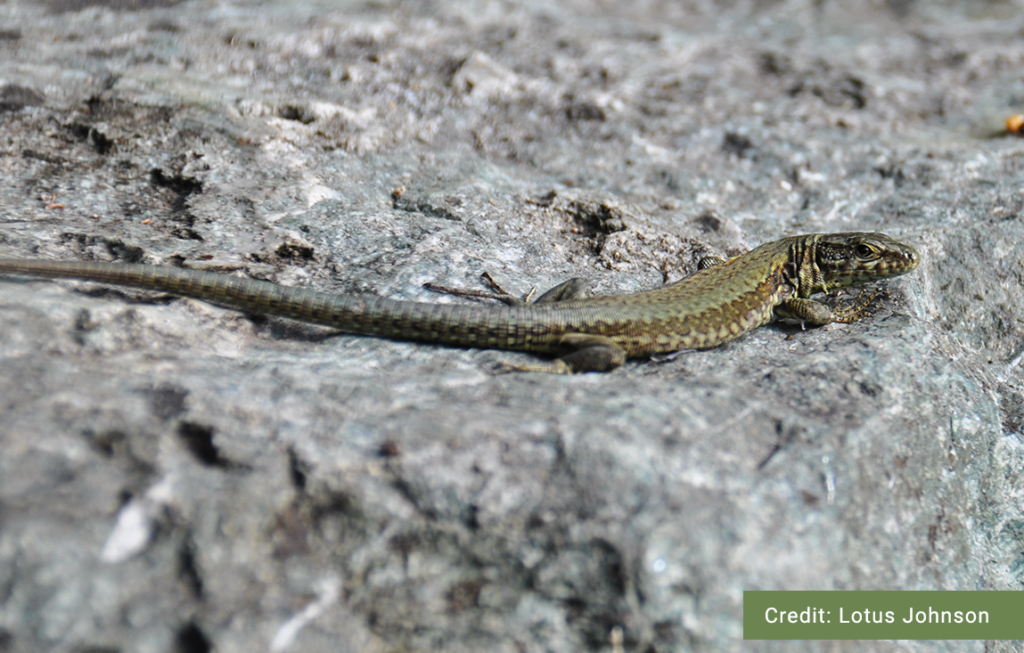
Common Wall Lizard
Distribution
Habitat
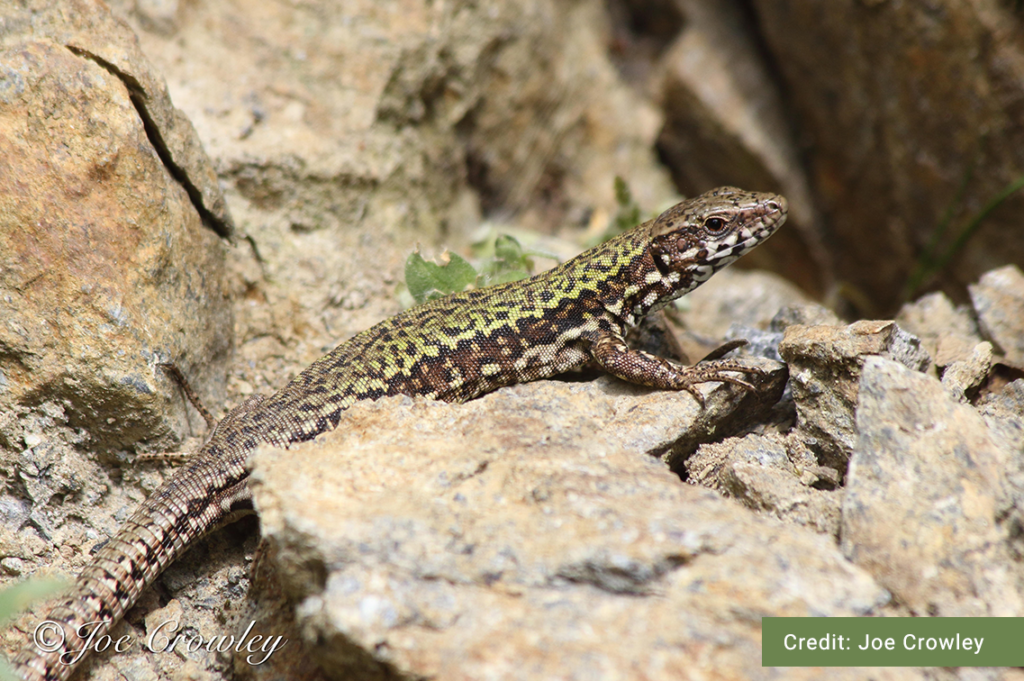
Reproduction
Common Wall Lizards are oviparousDefinition:A reproductive strategy where the female lays eggs that develop outside of the mother’s body. and can lay eggs multiple times per year. Mating occurs quickly after they emerge from hibernation. About one month after, females will lay anywhere from 3-11 eggs. If it is a particularly sunny/warm year and females are in good condition, they may lay up to two more clutchesDefinition:The group of eggs produced by birds, amphibians, or reptiles, often at a single time, particularly those laid in a nest. before the summer ends. The female will either bury the eggs underground, or place them under a rock or piece of bark, where the eggs will incubate for about a month before hatching.
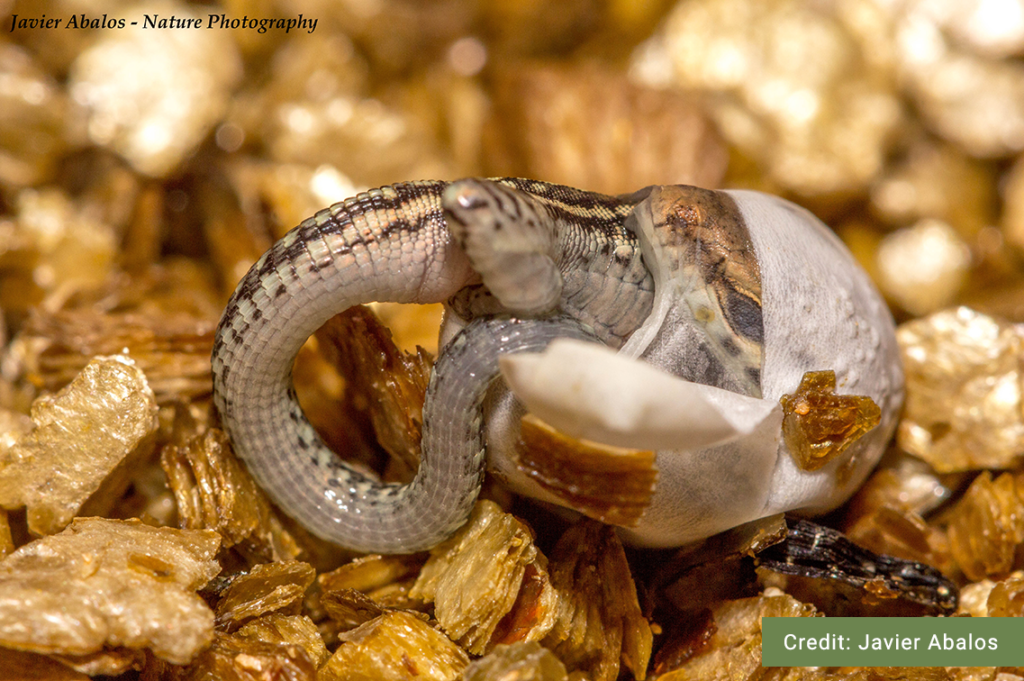
Diet
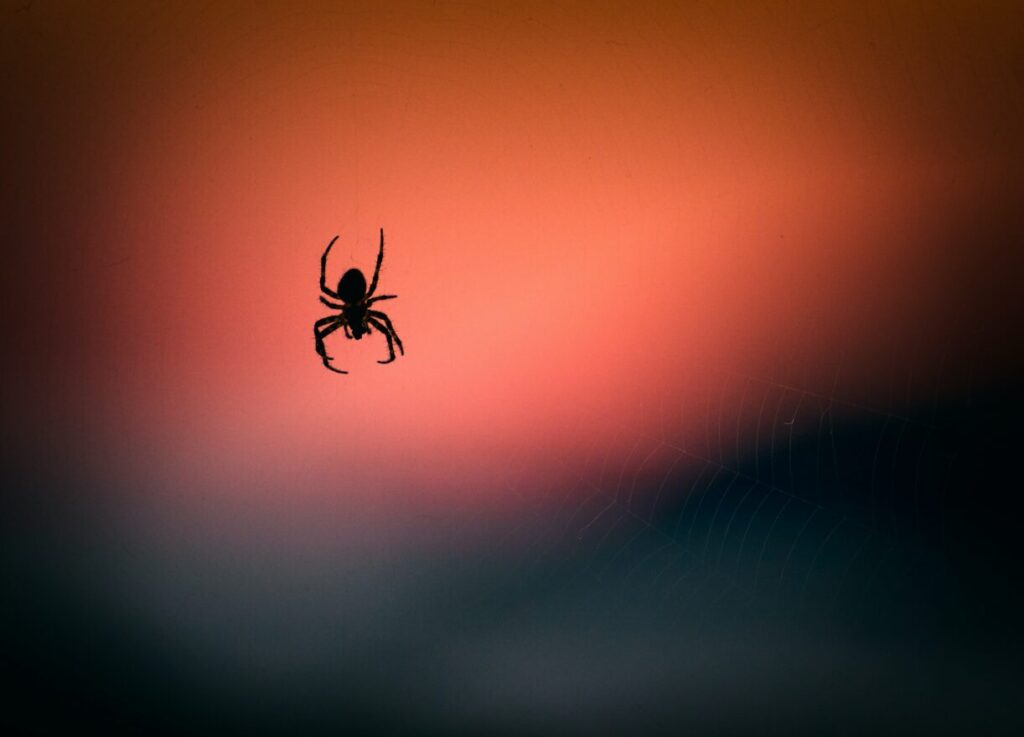
Conservation Status
Global: G5 (1999)
Provincial: SNA (2018)
BC List: Exotic
Learn more about conservation status rankings here
Threats
Did You Know?
Species Account Author: Marcus Atkins
B.C. Conservation Data Centre. 1993. Species Summary: Podarcis muralis. B.C. Minist. of Environment. Available: https://a100.gov.bc.ca/pub/eswp/ (accessed May 31, 2021).
B.C. Conservation Data Centre. 2021. BC Species and Ecosystems Explorer. B.C. Minist. of Environ. Victoria, B.C. Available: https://a100.gov.bc.ca/pub/eswp/ (accessed May 31, 2021).
http://linnet.geog.ubc.ca/efauna/Atlas/Atlas.aspx?sciname=Podarcis%20muralis
https://www.bcreptiles.ca/lizards/eurowall.htm

